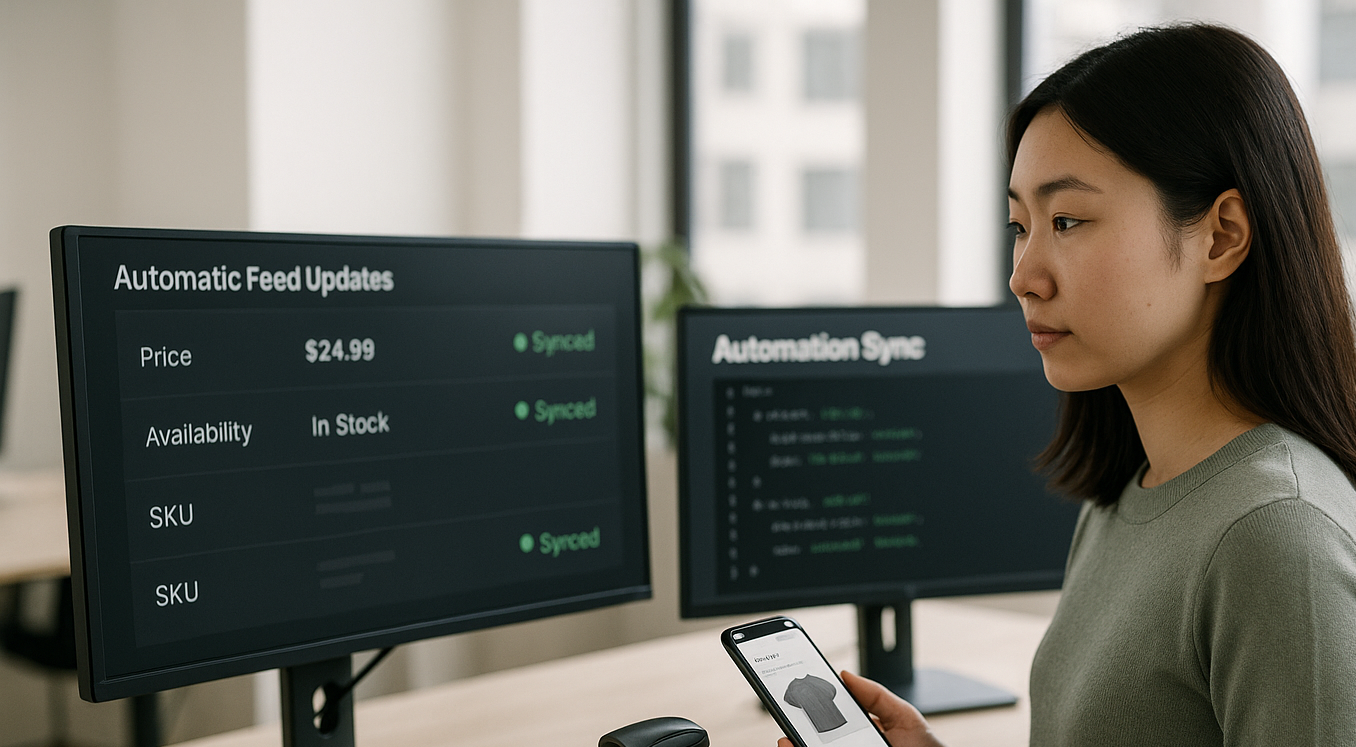.png)

What PDP Automation Really Means

⚡ TL;DR — What PDP Automation Really Means
- Automation isn’t about AI copy—it’s about field sync
- Schema, price, and availability should update automatically
- Structure is what keeps PDPs visible
- Accuracy depends on integration, not effort
When people hear “PDP automation,” they usually think of AI writing product descriptions.
But that’s not the kind of automation that actually keeps your product pages healthy.
Real PDP automation isn’t about generating copy—it’s about keeping structured fields synced across systems so your pages stay accurate, discoverable, and compliant without manual work.
This lesson defines what true automation looks like—and why it matters.
Content ≠ Automation
Yes, AI can help write PDP copy. But that’s not the same as automation.
Content automation might give you a starting point.
But it won’t fix mismatched prices, missing schema, or stale stock info.
True PDP automation is about structure:
- Price changes reflected automatically
- Inventory synced without manual input
- Schema injected dynamically
- Product Schema kept current
- Feed Drift eliminated
It’s not about writing faster. It’s about syncing better.
What Real PDP Automation Looks Like
A PDP is made up of fields—price, availability, brand, SKU, images, variants.
Automation means those fields update without someone having to touch them.
Here’s what should be automated:
FieldUpdate SourceWhy it mattersPricePIM / feedGoogle & Meta reject mismatchesAvailabilityinventory engineKeeps PDPs compliantSchemaauto-injected templatePrevents Schema ErrorsImages & Alt Textcatalog or PIMRequired for AI Feed ParsingVariantsparent/child logicPowers product cards & swatches
The goal: no more field-level copy/paste.
See Where Automation Fills the Gaps for examples.
Automation = Visibility Safeguard
When your PDPs update automatically, platforms trust your data more.
And trust leads to visibility.
Here’s how automation protects you:
✅ Prevents disapprovals – synced Price Sync avoids Shopping feed issues
✅ Reduces decay – stale content is flagged less often
✅ Improves compliance – structured fields stay valid
✅ Strengthens discoverability – platforms like TikTok, Meta, and Google rank cleaner PDPs higher
Automation doesn’t just save time—it protects visibility.
How to Know If You’re Ready
Ask yourself:
- Are core fields like price, stock, and brand managed by a system—or by people?
- Does your CMS render schema from live data—or static templates?
- Do updates flow from one system to another—or get duplicated manually?
- Is there a reliable Update Cadence across your catalog?
If the answer is “manual,” you’re not automated yet.
Check System Integrations and Field Updates for next steps.
Bottom Line
PDP automation isn’t about AI-generated descriptions.
It’s about syncing your fields—so your product pages stay live, aligned, and trusted.
You don’t need more tools. You need smarter connections between the ones you already use.
